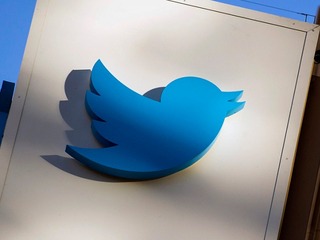Global AI in healthcare market expected to rise to $164B by 2030
The market size for 2023 was $10.31 billion
Read more...
One of Jack Dorsey's solutions to Twitter's executive problem, meaning that so many of them have been leaving as the company has struggled, has been to give employees stock, in the hopes that it will persuade them to stay on.
In October, Jack Dorsey announced that he was giving away roughly a third of his stake in Twitter, and now shareholders have approved the plan, after the company sent them a letter specifically calling upon them to do so. However, it did not go down without something of a fight.
A significant portion of shareholders voted against Dorsey's plan, according to a document filed with the Securities and Exchange Commission.
While it was approved with over 223 million shares in the affirmative, another 123,907,045 shares against it, while an additional 1,847,614 shares chose to not vote at all, and therefore had their votes counted against it.
There were another 202,867,909 shares, which are owned by brokers who did not have the authority to vote, so these were not counted in the final tally.
In the end, 64 percent of shares said yes to the plan, while 36 percent said no, or did not vote at all.
With that vote, Dorsey's plan has been given the go-ahead. When he first announced he was giving away a third of his stock, Dorsey said it was being given "to our employee equity pool to reinvest directly in our people." The total value of the stake Dorsey gave away, which was about 1 percent of the company, came to $211 million.
No timeframe for when the stock will be distributed back has been disclosed so far.
In March it was also reported that the company was giving employees additional restricted stock, with the amount that each employee gets depending on how long they've been working at Twitter.
In addition, Twitter was said to be giving employees bonuses, starting at $50,000 and going up to $200,000, in order to get them to stay another six months, or another year.
So far, these plans have not done much to stem the tide of executives leaving the company. Katie Jacobs Stanton, the company’s VP of global media; Kevin Weil, it's SVP of product; Alex Roetter, who is and SVP of engineering; Jason Toff, general manager at Vine; and Brian “Skip” Schipper, Twitter's Vice President of Human Resources, all of whom chose to leave Twitter at the exact same time.
Those departures followed Mike Davidson, Twitter's Head of Design, announced he was leaving the company in December. In the two weeks prior Twitter had also lost engineer Utkarsh Srivastava, who helped the company build its ads business, and it also saw the departure of Glenn Otis Brown, who has been heading up Twitter’s video ad program. Srivastava left for Google, while Brown went to Betaworks.
This month, Twitter lost two more executives, as Jana Messerschmidt, the head of business development, and Nathan Hubbard, head of media and commerce, both announced they were leaving the company.
Sadly for Twitter, giving out stock might not be the best incentive right now, as the company fell to its lowest ever earlier this month, hitting $14.1 a share.
(Image source: qz.com)
The market size for 2023 was $10.31 billion
Read more...At Culture, Religion & Tech, take II in Miami on October 29, 2024
Read more...The company will use the funding to broaden the scope of its AI, including new administrative tasks
Read more...Startup/Business
Joined Vator on
Twitter is an online information network that allows anyone with an account to post 140 character messages, called tweets. It is free to sign up. Users then follow other accounts which they are interested in, and view the tweets of everyone they follow in their "timeline." Most Twitter accounts are public, where one does not need to approve a request to follow, or need to follow back. This makes Twitter a powerful "one to many" broadcast platform where individuals, companies or organizations can reach millions of followers with a single message. Twitter is accessible from Twitter.com, our mobile website, SMS, our mobile apps for iPhone, Android, Blackberry, our iPad application, or 3rd party clients built by outside developers using our API. Twitter accounts can also be private, where the owner must approve follower requests.
Twitter started as an internal project within the podcasting company Odeo. Jack Dorsey, and engineer, had long been interested in status updates. Jack developed the idea, along with Biz Stone, and the first prototype was built in two weeks in March 2006 and launched publicly in August of 2006. The service grew popular very quickly and it soon made sense for Twitter to move outside of Odea. In May 2007, Twitter Inc was founded.
Our engineering team works with a web application framework called Ruby on Rails. We all work on Apple computers except for testing purposes.
We built Twitter using Ruby on Rails because it allows us to work quickly and easily--our team likes to deploy features and changes multiple times per day. Rails provides skeleton code frameworks so we don't have to re-invent the wheel every time we want to add something simple like a sign in form or a picture upload feature.
There are a few ways that Twitter makes money. We have licensing deals in place with Google, Yahoo!, and Microsoft's Bing to give them access to the "firehose" - a stream of tweets so that they can more easily incorporate those tweets into their search results.
In Summer 2010, we launched our Promoted Tweets product. Promoted Tweets are a special kind of tweet which appear at the top of search results within Twitter.com, if a company has bid on that keyword. Unlike search results in search engines, Promoted Tweets are normal tweets from a business, so they are as interactive as any other tweet - you can @reply, favorite or retweet a Promoted Tweet.
At the same time, we launched Promoted Trends, where companies can place a trend (clearly marked Promoted) within Twitter's Trending Topics. These are especially effective for upcoming launches, like a movie or album release.
Lastly, we started a Twitter account called @earlybird where we partner with other companies to provide users with a special, short-term deal. For example, we partnered with Virgin America for a special day of fares on Virginamerica.com that were only accessible through the link in the @earlybird tweet.
What's next for Twitter?
We continue to focus on building a product that provides value for users.
We're building Twitter, Inc into a successful, revenue-generating company that attracts world-class talent with an inspiring culture and attitude towards doing business.


